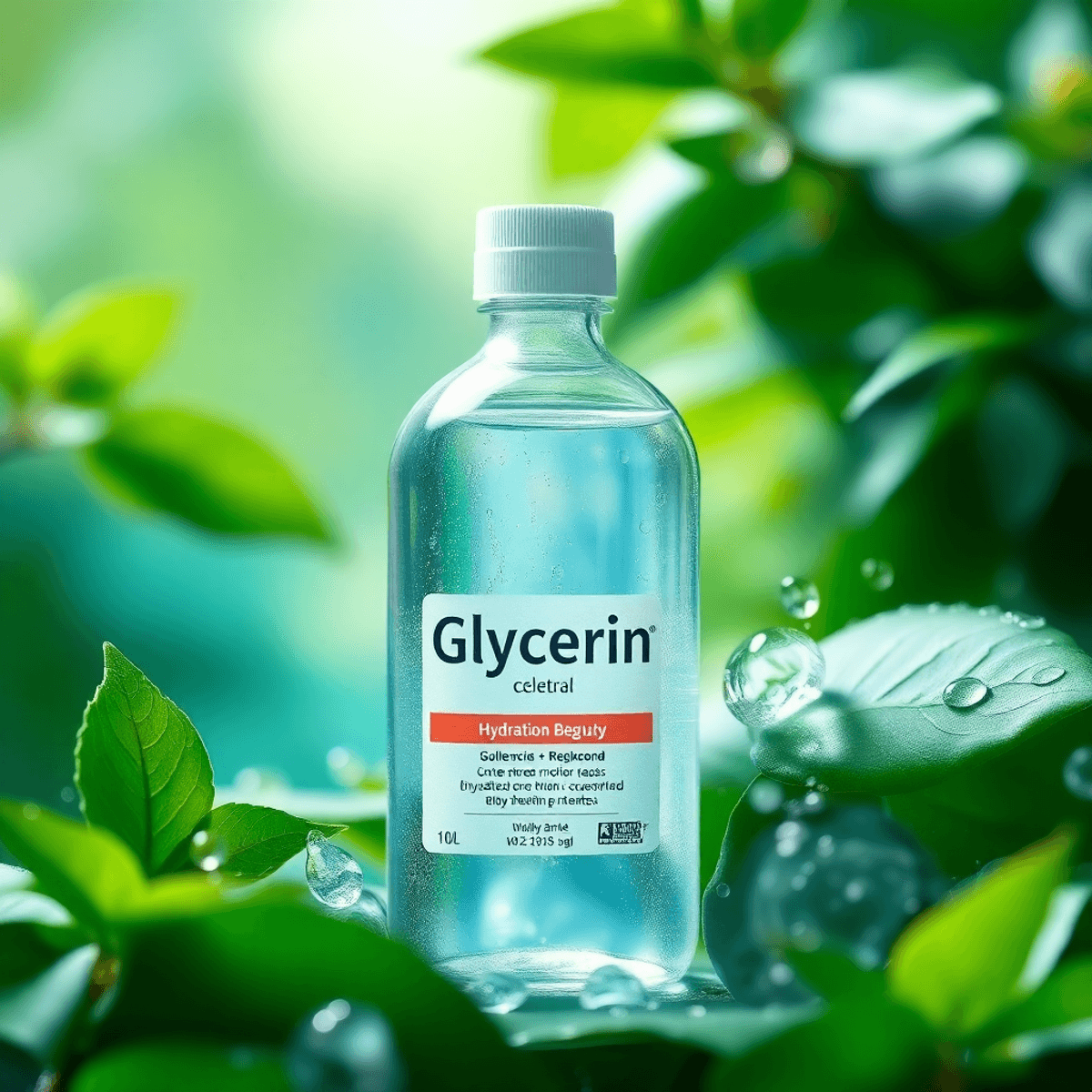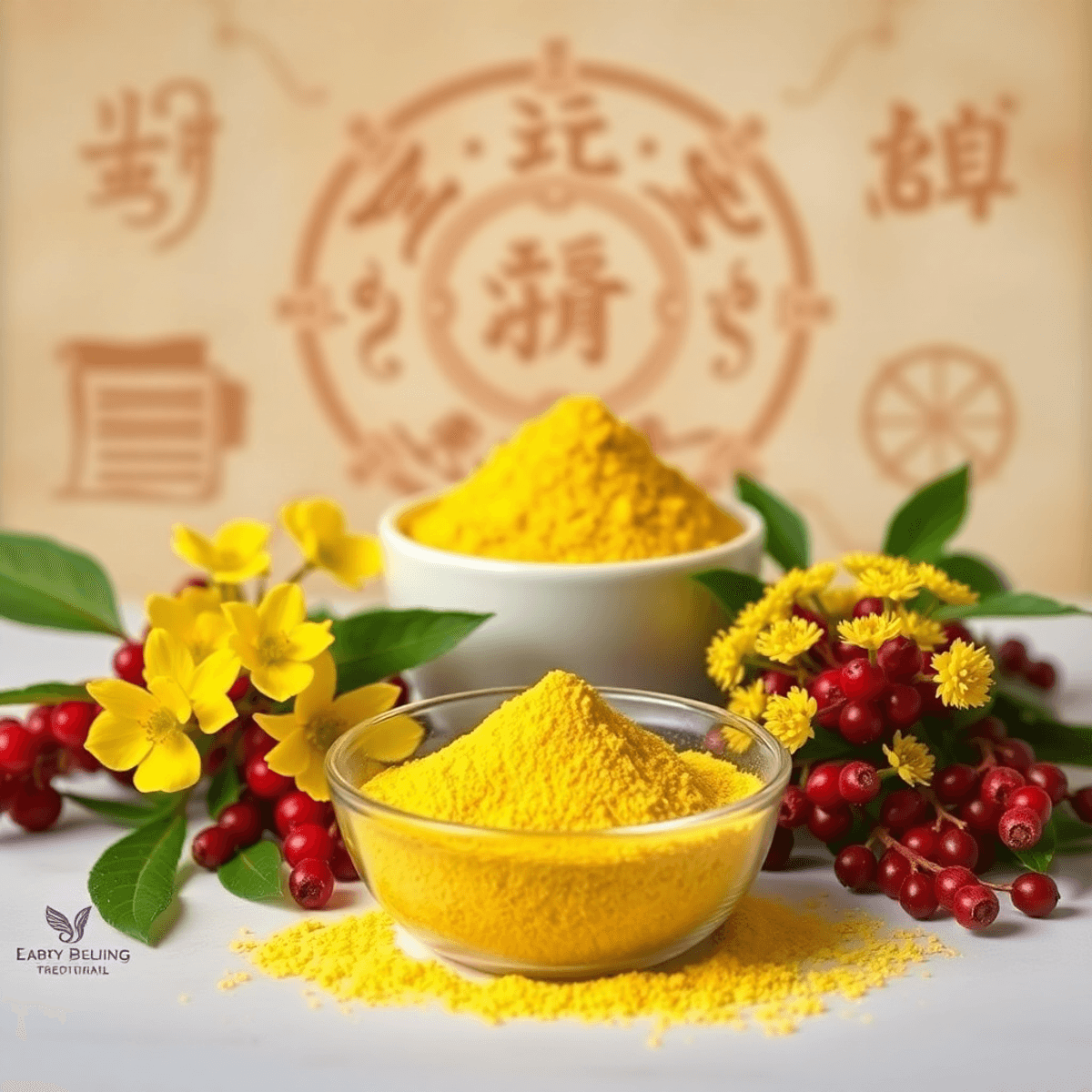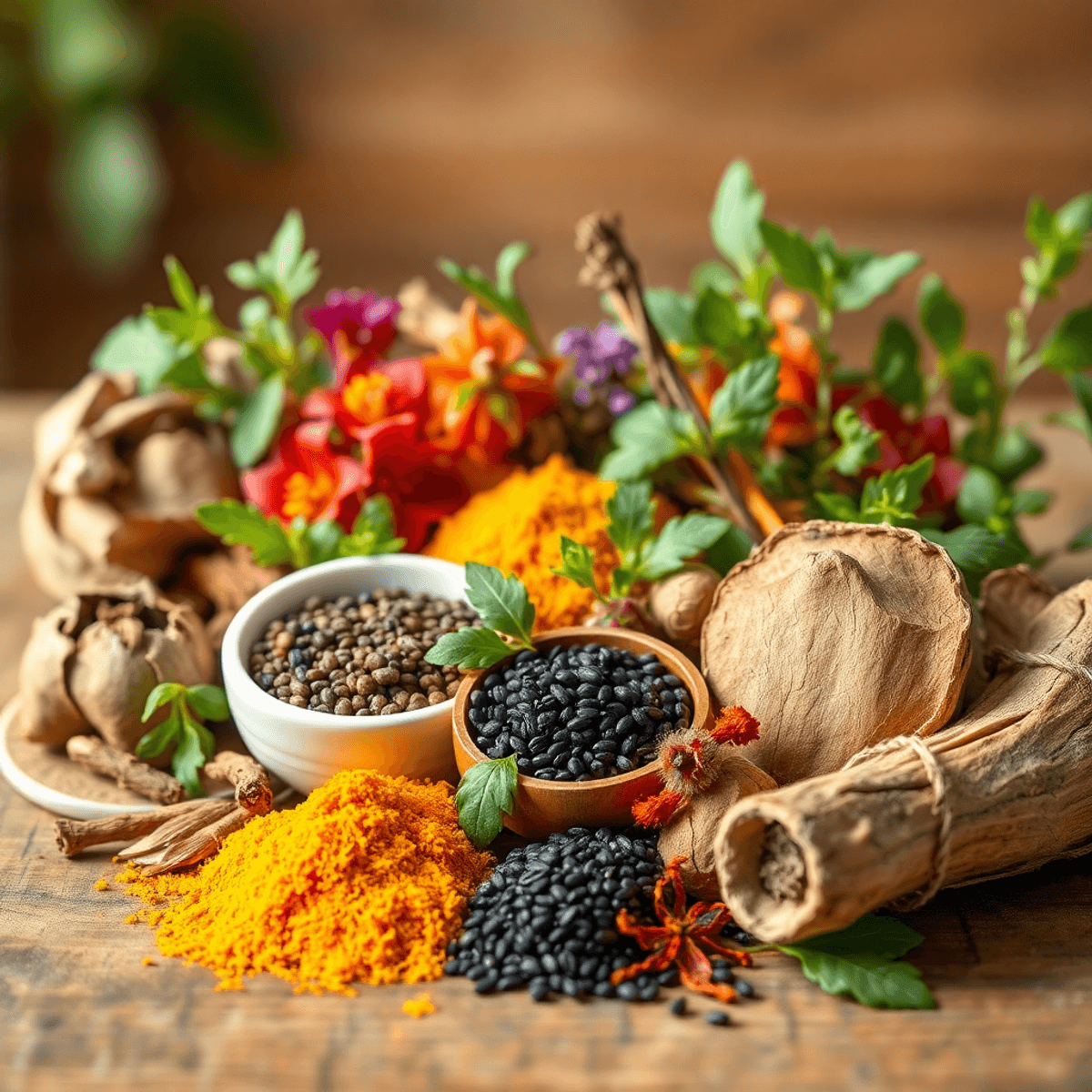10 Natural Ingredients for Effective Pain Relief

Introduction
In recent years, natural pain relief has gained immense popularity as people seek alternatives to pharmaceuticals for managing discomfort. The growing awareness of the potential side effects associated with conventional medications has led many to explore nature's vast repertoire of healing ingredients.
This article delves into 10 natural ingredients renowned for their effectiveness in pain relief, offering insights into how they can aid in chronic pain management. Discover why nature often holds the answer to effective pain relief and how these ingredients can be incorporated into your wellness routine.
Understanding Pain and Inflammation
Pain and inflammation are closely connected, often occurring together in conditions that require chronic pain treatment. When the body's tissues are damaged or infected, inflammation happens as a protective response. However, this helpful process can become problematic when it leads to prolonged or excessive pain.
Key Components in Pain Mechanisms
- Cytokines and Prostaglandins: These molecules play crucial roles in the body's immune response. Cytokines are proteins that modulate the intensity of pain by signalling between cells, while prostaglandins increase pain sensitivity by promoting inflammation and fever.
- Inflammatory Pathways: The arachidonic acid pathway is a significant contributor to pain perception. This pathway converts arachidonic acid into prostaglandins and other inflammatory mediators that heighten pain signals.
Understanding these mechanisms provides insight into how managing inflammation can be crucial in treatments like knee pain treatment at home. By addressing inflammation, you can significantly reduce discomfort and improve overall quality of life.
The Benefits of Natural Pain Relief Ingredients
Natural compounds, such as herbal remedies and dietary supplements, offer promising alternatives to conventional NSAIDs and anti-inflammatory drugs. These natural pain management solutions are often preferred due to their reduced risk of adverse effects. Conventional medications can lead to side effects like gastrointestinal issues, cardiovascular concerns, and allergic reactions, which can be a significant concern for long-term use.
Advantages of Natural Pain Medicine:
- Lower Side Effect Profile: Many natural pain medications are derived from plants and herbs that have been used safely for centuries.
- Holistic Approach: They often provide additional health benefits beyond pain relief, supporting overall wellness.
- Sustainability: These remedies typically involve sustainable practices that respect the environment.
The popularity of natural pain killers is growing as people seek holistic solutions for conditions like arthritis, migraines, and back pain. This shift is driven by a desire for safer alternatives that align with personal health philosophies. Natural remedies for back pain, for instance, are gaining traction due to their effectiveness without the dependency issues associated with some pharmaceuticals.
Exploring these natural options not only opens doors to effective pain relief but also supports a lifestyle focused on well-being and balance.
1. Turmeric (Curcumin)
Turmeric, a golden spice revered for centuries, stands out due to its powerful anti-inflammatory properties. The key to its effectiveness is curcumin, a compound extensively studied for its ability to relieve chronic pain and fight inflammation. Scientific research highlights curcumin's effectiveness in treating conditions like arthritis, providing relief by regulating inflammatory pathways.
Usage and Forms
- Supplements: Often preferred for higher curcumin concentration.
- Spice: Incorporating turmeric into daily meals can also be beneficial.
Embracing turmeric underscores a broader truth—nature often has the answer to pain relief ingredients.
2. Ginger
Ginger is well-known for its ability to reduce muscle soreness and discomfort because of its powerful anti-inflammatory properties. This root works by blocking enzymes that cause inflammation, making it a natural choice for relieving muscle pain. Studies suggest ginger's effectiveness in reducing pain after surgery is similar to that of ibuprofen, providing a natural alternative for those looking for non-drug options.
- Forms: Fresh ginger, powdered supplements, teas, or extracts.
- Dosage: Generally, 1-2 grams per day may provide the best results. Always consult with a healthcare professional to determine the right dosage for your needs.
3. Capsaicin
Capsaicin, the active component in chilli peppers, is a powerful agent for nerve pain relief. It works by binding to TRPV1 receptors in the nervous system, reducing the strength of pain signals. This mechanism makes capsaicin cream effective in treating conditions like shingles and diabetic nerve damage, as well as muscle-related pains.
Use Cases
- Ideal for nerve and muscle pains.
Application Methods
- Available in topical forms such as creams and patches.
Precautions
- Avoid applying on broken skin; an initial burning sensation may occur but usually goes away with continued use.
4. Cloves (Eugenol)
Clove oil is known for its ability to relieve pain, and this is largely due to a compound called eugenol. Eugenol is effective in providing relief from toothaches and other minor pains, making clove oil a common remedy in natural medicine. It has been traditionally used to ease dental discomfort by numbing the affected area.
Recommended Application Methods
- Topical application: Dilute clove oil with a carrier oil and apply directly to the painful area.
- Oral care: Add a drop of diluted clove oil onto a cotton ball and gently dab around the toothache area.
When exploring nature's various ingredients for pain relief, it often turns out that simple solutions like cloves can effectively manage discomfort.
5. Lavender Essential Oil
Lavender essential oil offers a dual benefit of calming properties and analgesic effects, making it a popular choice for those seeking relief from headaches and muscle aches. Its soothing aroma is widely used in aromatherapy for headaches, providing mental relaxation while easing physical discomfort.
Methods of Use:
- Aromatherapy: Diffuse lavender oil to inhale its calming scent.
- Topical Application: Dilute with carrier oil and apply to temples or sore muscles.
Safety Considerations:
- Always perform a patch test before topical use.
- Consult with healthcare providers if pregnant or nursing.
Lavender oil benefits extend beyond relaxation, offering a natural path to pain alleviation.
6. Peppermint Oil
Peppermint oil is known for its cooling effects that effectively relieve tension headaches and muscle spasms. The main ingredient, menthol, provides a soothing sensation by interacting with specific receptors in the skin and muscles, helping to alleviate discomfort. Here are some ways to use peppermint oil:
- Topical application: Mix peppermint oil with a carrier oil and apply it to your temples or any sore muscles.
- Inhalation: Put a few drops of peppermint oil in a diffuser to help relieve headaches.
These methods make use of the benefits of peppermint oil, providing a natural way to manage pain without using medications.
7. Feverfew
Feverfew has been celebrated for centuries as a migraine prevention herb due to its potent anti-inflammatory properties. This natural remedy not only helps manage migraines but also shows effectiveness against various body pains, including those caused by arthritis. Its ability to reduce muscle spasms makes it a versatile option in pain management. Typically consumed as dried leaves, capsules, or tablets, feverfew can be easily added into your daily routine to harness its benefits.
8. Rosemary
Rosemary is known for its versatility in cooking and its health benefits, especially in relieving headaches and muscle pain. This fragrant herb has anti-inflammatory properties that can help reduce tension and discomfort, making it a useful addition to natural pain management methods.
Culinary Uses
In the kitchen, rosemary is often used to enhance the flavour of various dishes, including:
- Roasted meats and vegetables
- Soups and stews
- Bread and baked goods
- Marinades and sauces
Medicinal Applications
Beyond cooking, rosemary also has medicinal uses such as:
- Drinking rosemary tea for digestive issues
- Using rosemary essential oil for aromatherapy
- Applying topical ointments containing rosemary for sore muscles
These different forms of rosemary allow you to effectively tap into its healing properties and incorporate them into your daily routine for better overall health.
9. Eucalyptus Oil
Eucalyptus oil is known for its ability to reduce swelling, especially in conditions like rheumatoid arthritis. This essential oil works by relieving inflammation, providing relief from joint pain and stiffness. There are several ways to use eucalyptus oil:
- Topical Ointments: Apply diluted eucalyptus oil directly to the affected area. It's important to do a patch test first to make sure there's no allergic reaction.
- Steam Inhalation: Add a few drops of eucalyptus oil to hot water and inhale the steam. This method can help with respiratory issues and provide overall anti-inflammatory effects.
Safety Tips:
- Always dilute eucalyptus oil before using it topically.
- Avoid contact with eyes and sensitive skin areas.
- Consult with a healthcare provider if you are pregnant, nursing, or managing chronic health conditions.
10. Boswellia (Frankincense)
Boswellia, commonly known as frankincense, has been a cornerstone in Ayurvedic medicine for centuries, renowned for its ability to manage inflammatory conditions. This natural resin is celebrated for its role in alleviating symptoms of osteoarthritis and various chronic pain disorders. The secret behind Boswellia's effectiveness lies in its ability to inhibit pro-inflammatory enzymes, providing a natural pathway to pain relief.
Recommended Forms:
- Capsules: Convenient for daily supplementation.
- Topical Creams: Direct application to affected areas.
- Essential Oils: Used in aromatherapy or diluted for topical use.
Boswellia benefits extend beyond osteoarthritis, emphasizing why nature often holds the key to effective pain relief ingredients.
Conclusion: Embracing Nature's Wisdom for Pain Relief
Exploring natural ingredients for pain relief opens the door to a holistic approach to pain management. These remedies, with their roots in ancient traditions, offer potential benefits that many seek in the face of chronic discomfort. However, it's vital to remember the importance of consulting healthcare professionals before starting any new treatment.
Engaging with these natural solutions highlights why nature often has the answer to pain relief ingredients. A balanced integration of traditional wisdom and modern science can enhance overall well-being, offering relief while minimizing risks associated with conventional medications.
Embracing this approach not only addresses symptoms but also nurtures a deeper connection to health as a whole. By considering both natural and medical perspectives, you can make informed decisions that align with your personal health journey.
FAQs (Frequently Asked Questions)
What are natural ingredients for pain relief?
Natural ingredients for pain relief include herbs and essential oils such as turmeric, ginger, capsaicin, cloves, lavender oil, peppermint oil, feverfew, rosemary, eucalyptus oil, and boswellia. These compounds have been used for centuries to alleviate pain and inflammation.
How does turmeric help with pain relief?
Turmeric contains curcumin, which is known for its anti-inflammatory properties. It helps reduce pain by inhibiting the production of inflammatory cytokines and prostaglandins. Turmeric is often consumed in supplement form for higher concentrations of curcumin.
What is the role of capsaicin in pain management?
Capsaicin, found in chilli peppers, is effective for nerve and muscle pains. It works by desensitizing nerve receptors that transmit pain signals. Capsaicin is commonly available in topical forms like creams and patches.
Can essential oils be used for pain relief?
Yes, essential oils such as lavender and peppermint can be effective for pain relief. Lavender oil provides calming effects while also alleviating discomfort. Peppermint oil offers cooling sensations that help relieve muscle tension and headaches.
What precautions should be taken when using clove oil?
When using clove oil for pain relief, it should be diluted with a carrier oil before topical application to avoid skin irritation. It is also important to avoid applying it on broken skin due to potential burning sensations.
How does rosemary contribute to pain relief?
Rosemary has both culinary and medicinal uses. It is known to enhance flavour in cooking while also possessing anti-inflammatory properties that can help relieve muscle and joint pain when used in essential oil form or as an infusion.












